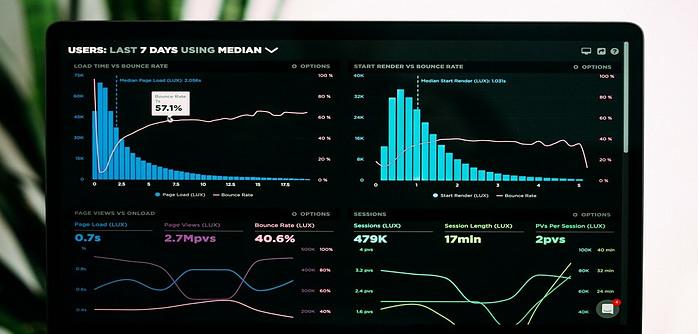Optimizing your on-page SEO is considered a critical factor in achieving success online. Wealthy Affiliate’s comprehensive framework is designed to improve your web pages’ search engine rankings and enhance your website’s user experience. Let’s delve into the key on-page SEO elements and see how Wealthy Affiliate’s approach can help you master them, improving your website’s visibility and user experience.

Understanding On-Page SEO
Understanding the concept of On-Page SEO? Your insights could significantly contribute to our discussion. Please comment below.
On-page SEO is like giving your website a VIP treatment to make sure it shines and stands out in the crowded online space! 🌟 It’s the art and science of fine-tuning individual web pages. Hence, they rank higher and attract more relevant traffic from search engines.
This involves optimizing your content, polishing your HTML source code, and perfecting various elements directly within your website. Think of it as making your site irresistible to both search engines and visitors! 🌐✨
Why On-Page SEO Matters
Effective on-page SEO enhances your site’s visibility, user experience, and relevancy to search queries, Leading to better rankings, increased traffic, and higher conversion rates.
On-page SEO is a crucial aspect of any successful online strategy. By optimizing your web pages for search engines and users, you can improve your rankings, attract more organic traffic, enhance user experience, and build site authority. Investing in on-page SEO is a long-term commitment to the success of your website. Embrace these practices, and rest assured, your online presence will grow.
Crafting Compelling and Optimized Content
In the SEO world, keyword integration is not just a critical component; it’s the backbone that can significantly impact your content’s visibility on search engines. However, it’s not about stuffing your content with keywords; it’s about weaving them in naturally and contextually. This guide will walk you through effective strategies to balance relevance and natural flow in keyword integration, ensuring your content ranks well while remaining engaging and readable.
What is Keyword Integration?
Keyword integration involves incorporating targeted keywords into your content in a way that feels natural and enhances the user experience. Proper keyword integration helps search engines understand the topic of your content, making it easier for them to rank your page for relevant queries.
Why Balancing Relevance and Natural Flow Matters
Overusing keywords can lead to keyword stuffing, which search engines penalize. Conversely, underusing them can make it difficult for search engines to grasp the content’s context. Striking the right balance ensures that your content is both SEO-friendly and reader-friendly.
Strategies for Effective Keyword Integration
Identifying the Right Keywords
Before you start integrating keywords into your content, it’s important to identify the right ones. You can use tools like Jaaxy from Wealthy Affiliate to find high-traffic, low-competition keywords that are relevant to your content. This will help you optimize your content for search engines and attract more organic traffic to your website.
Tips for Identifying Keywords:
– Primary Keywords: Choose a main keyword closely related to your content’s topic.
– Secondary Keywords: Select related keywords and phrases to support your primary keyword.
– Long-Tail Keywords: Focus on longer, more specific phrases that address niche queries.
Placing Keywords Strategically
Your keywords’ placement significantly impacts your website’s search engine optimization (SEO) performance. It’s important to strategically position your keywords within your content to improve your website’s visibility and ranking on search engine results pages. Here’s how to strategically position them within your content:
Title and Headings
To optimize your content for search engines effectively, it is crucial to strategically place your primary keyword in the title and headings. By incorporating relevant keywords in these prominent locations, you can efficiently convey the central theme of your content to search engines, enhancing your content’s visibility and significance in search results. This strategic placement of keywords can improve search engine rankings and increase organic traffic to your content.
Best Practices:
– Title: Place your primary keyword at the beginning.
– Headings (H2, H3): Use primary and secondary keywords in subheadings to structure your content and enhance readability.
Introduction and Conclusion
It’s important to include your primary keyword in your content’s introduction and conclusion. By doing so, you emphasize the central theme and assist search engines in understanding the relevance of your content. This practice also helps improve your content’s overall SEO (Search Engine Optimization), making it more discoverable to your target audience.
Including the primary keyword at strategic points within the content can signal to search engines that your content is valuable and relevant to users searching for that particular topic. This can ultimately lead to better search engine rankings and increased visibility for your content.
Introduction Tips:
– Introduce the main topic naturally with your primary keyword.
– Ensure the opening sentence captures attention while setting the context.
Conclusion Tips:
– Summarize the key points and restate the primary keyword.
– Include a call-to-action that naturally incorporates keywords.
Body Content
Remember to distribute your targeted keywords evenly throughout your content. This will allow you to maintain relevance without making your content seem forced or unnatural. This approach can help improve your search engine optimization (SEO) efforts and ensure your content resonates with your audience.
Body Content Tips:
– Use primary and secondary keywords naturally within sentences.
– Incorporate long-tail keywords where they fit contextually.
– Avoid keyword stuffing by maintaining a natural flow and prioritizing readability.
Enhancing Natural Flow
Ensuring that keywords fit naturally within your content is crucial. Here are some techniques to achieve a seamless integration:
Synonyms and Related Terms
When creating content, it’s crucial to strategically distribute your chosen keywords throughout the text. This will ensure that your content remains pertinent to the topic without appearing forced. This balanced approach to keyword placement not only aids in maintaining relevance but also contributes to a more organic and authentic reading experience for your audience. Additionally, it can positively impact your search engine optimization (SEO) efforts, making your content more discoverable and valuable to your target audience.
Example:
– Primary keyword: “SEO tips”
– Synonyms: “SEO strategies,” “search engine optimization techniques”
Contextual Integration
In order to maintain the readability and relevance of the text, it is essential to carefully integrate relevant keywords in a manner that seamlessly aligns with the context of the sentences. This approach is crucial for upholding the overall coherence and effectiveness of the content.
Example:
– Instead of: “SEO tips are essential. SEO tips help you rank higher.”
– Use: “SEO tips are essential for higher rankings and better visibility.”
Using Tools and Plugins
Don’t overlook this important tip: Use various tools and plugins to integrate and improve keywords smoothly. Wealthy Affiliate offers a variety of tools to assist you in refining and optimizing your keyword strategy.
Recommended Tools:
– Jaaxy: This is for keyword research and tracking.
– Semper Plugins LLC Plugin: For real-time keyword usage analysis and content optimization.
Monitoring and Adjusting
It’s important to consistently monitor your content’s performance to gain insights into the effectiveness of your chosen keywords. Utilize analytics tools to monitor keyword rankings regularly and be ready to make any required adjustments to optimize your content’s performance.
Monitoring Tips:
– Check keyword rankings and organic traffic.
– Analyze user engagement metrics like bounce rate and average session duration.
– Update and optimize content based on performance data.
Mastering Keyword Integration
Balancing relevance and natural flow in keyword integration is essential for successful SEO. By strategically placing keywords, using synonyms and related terms, and leveraging tools, you can create content that ranks well on search engines while remaining engaging and readable for your audience. With these strategies, you can master keyword integration and elevate your content’s SEO performance.
—
Ready to optimize your content with seamless keyword integration? Start applying these strategies today and watch your search rankings improve!
Wealthy Affiliate emphasizes the strategic use of keywords within your content. Integrate primary and secondary keywords naturally to maintain readability and relevance.
Tips for Effective Keyword Integration:
– Use primary keywords in titles, headers, and the first paragraph.
– Scatter secondary keywords throughout the content.
– Avoid keyword stuffing; focus on delivering value.
Engaging Headlines and Subheadings

When creating headlines and subheadings, it’s essential to make them compelling and keyword-rich. According to Wealthy Affiliate, crafting headlines that capture attention and effectively convey the content’s value to the reader is recommended. This can help make the content more engaging and appealing to the target audience.
Strategies for Crafting Headlines:
– Incorporate power words to evoke emotions.
– Use numbers or lists to suggest actionable content.
– Ensure your headlines and subheadings reflect the search intent.
Optimizing HTML Elements: Small Tweaks, Big Results
Title Tags: The First Impression
Title tags play a crucial role in search engine optimization (SEO) and user experience. They are the first thing users see in search engine results, and they provide a brief preview of what the page is about. Wealthy Affiliate emphasizes the importance of creating concise and keyword-rich title tags that accurately describe the content of your web pages. By doing so, you can improve your website’s visibility in search results and attract more relevant traffic.
Best Practices for Title Tags:
– Keep them under 60 characters to ensure full display in search results.
– Place primary keywords at the beginning.
– Make them unique and descriptive.
Meta Descriptions: Enticing Clicks
Meta descriptions are a crucial part of your content as they appear in search engine results. Crafting compelling meta descriptions is vital as they should summarize the content of your page and entice users to click through to your website. Wealthy Affiliate provides training on creating effective meta descriptions that incorporate primary keywords and include a clear call to action. By using the techniques taught at Wealthy Affiliate, you can improve the click-through rate to your website and enhance your overall online presence.
Creating Effective Meta Descriptions:
– Limit to 160 characters to ensure complete visibility.
– Highlight the benefits of your content.
– Use active voice and actionable language. Concise, pertinent, and keyword-optimized URLs are recommended
URL Structure: Clean and Descriptive
A well-organized URL structure is beneficial for search engine optimization (SEO) and enhances the overall user experience. According to Wealthy Affiliate, concise, pertinent, and keyword-optimized URLs are recommended.
Optimizing URL Structure:
– Use hyphens to separate words.
– Avoid using special characters and numbers.
– Ensure URLs are readable and meaningful.
Enhancing User Experience: Key On-Page Factors
Internal Linking: Building a Web of Information
It’s important to remember that internal linking plays a crucial role in improving your website’s overall structure and navigation, which in turn helps search engines better understand and index your content. Wealthy Affiliate advises strategically placing internal links throughout your website to not only guide users to relevant content but also to distribute link equity effectively, ultimately boosting your website’s visibility and authority.
Effective Internal Linking Practices:
– Link to relevant content within your site.
– Use descriptive anchor text.
– Avoid excessive linking; focus on value.
Mobile Optimization: Reaching a Wider Audience
Ensuring your website is mobile-friendly is essential for improving your search engine optimization (SEO) efforts. Wealthy Affiliate offers a variety of tools and comprehensive training to help you optimize your site for mobile users. By enhancing the usability of your website on mobile devices, you can improve your search rankings and provide a better experience for your visitors.
Mobile Optimization Tips:
– Use responsive design to adapt to different screen sizes.
– Optimize images and media for faster loading times.
– Simplify navigation for mobile users.
Site Speed: Fast and Efficient
The speed at which a website loads and operates is an important factor that search engines consider when ranking websites in search results. Faster websites tend to have better rankings, so it’s crucial for website owners to prioritize optimizing their site speed for better visibility and user experience. Learn how to supercharge your website speed with Wealthy Affiliate! Gain valuable insights into optimizing images and leveraging browser caching for lightning-fast loading times.
Improving Site Speed:
– Compress images without compromising quality.
– Minimize the use of heavy scripts and plugins.
– Utilize content delivery networks (CDNs).
Leveraging Multimedia: Adding Value to Your Content
Optimizing Images: Visual Appeal and SEO
Incorporating images can greatly enhance user engagement, but it’s crucial to optimize them for search engine optimization (SEO) as well. To improve SEO performance, Wealthy Affiliate suggests using descriptive alt text, choosing relevant filenames, and selecting appropriate image formats.
Image Optimization Techniques:
– Include keywords in alt text and filenames.
– Choose the right format (JPEG, PNG, etc.) for each image.
– Compress images to reduce file size.
Incorporating Videos: Engaging and Informative
Incorporating videos on a website can substantially affect user engagement and the duration of time visitors spend on the site. Studies have shown that compelling video content can lead to increased interaction, longer session durations, and a higher likelihood of visitors returning to the site. Wealthy Affiliate emphasizes the importance of using pertinent videos and optimizing them for search engines to boost their exposure.
Optimizing Videos:
– Use descriptive titles and tags.
– Provide transcripts for accessibility.
– Ensure videos load quickly and play smoothly.
Monitoring and Refining On-Page SEO
Using Analytics: Data-Driven Decisions
Regularly monitoring your on-page SEO performance is crucial for your website’s success. As recommended by Wealthy Affiliate, it’s essential to use tools like Google Analytics to track various metrics. By analyzing this data, you can make informed decisions to improve your website’s performance and enhance its visibility in search engine results.
Key Metrics to Monitor:
– Bounce rate and average session duration.
– Page load time and mobile performance.
– Keyword rankings and organic traffic.
Continuous Improvement: Adapting to Changes
Search engine optimization (SEO) is a continuous process that requires ongoing effort and attention to maintain and improve a website’s ranking in search engine results. Staying updated with SEO trends and continuously refining your strategies is crucial, and Wealthy Affiliate emphasizes this importance.
Continuous Improvement Practices:
Conduct regular SEO audits to keep your website performing at its best. Update older content to keep it relevant and in line with current industry standards. Stay on top of algorithm changes and industry trends to adjust your SEO strategies and stay ahead of the competition.
Mastering On-Page SEO with Wealthy Affiliate
By adopting Wealthy Affiliate’s proven strategies for on-page SEO, you have the power to elevate your website’s ranking while delivering an outstanding user experience. Concentrate on fine-tuning your content, HTML elements, and overall site performance to pave the way for long-lasting SEO triumph. With unwavering commitment and a strategic mindset, your website can evolve into a formidable asset in your digital marketing endeavors.
—
Ready to take your on-page SEO to the next level?
Start applying these Wealthy Affiliate tips today and watch your website soar in search rankings!
Pure Opportunity!
Martin
🚀 Elevate Your Earnings with Wealthy Affiliate!
Unlock the door to digital prosperity with Wealthy Affiliate—the ultimate platform that transforms your passion into profit. Whether you’re a budding entrepreneur or a seasoned marketer, Wealthy Affiliate is your launchpad to success.
Why Wealthy Affiliate?
- Instant Niche Discovery: With our AI-driven tools, find your perfect business niche in a snap.
- Effortless Website Creation: Launch a stunning, profit-ready website in seconds—no tech headaches!
- Unlimited Traffic Mastery: Learn cutting-edge strategies to attract your ideal audience.
- Boundless Earning Potential: Monetize your traffic easily, choosing from nearly 600 million products.
Join a thriving community of over 2.6 million members and leverage 18 years of industry-leading experience. With Wealthy Affiliate, you’re not just building a business but crafting a future of financial freedom.
Start for Free Today! No credit card is required, and there is no risk.
Where to Source Testimonials
- Wealthy Affiliate’s Website/Blog: There are likely success stories showcased here.
- Trustpilot: See what genuine users are saying: https://www.trustpilot.com/review/wealthyaffiliate.com
- Social Media: Search for relevant hashtags on Twitter, Facebook groups, etc. Reach out directly to users expressing praise for the program.


